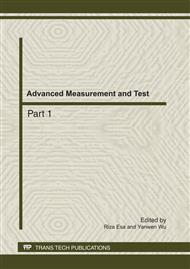p.1066
p.1072
p.1078
p.1083
p.1089
p.1093
p.1098
p.1104
p.1109
Conflict-Driven Learning in Test Pattern Generation
Abstract:
SAT-based automatic test pattern generation (ATPG) is built on a SAT-solver, which can be scalable is that it is able to take into account the information of high-level structure of formulas. Paper analyzes specific structure of circuit instances where correlations among signals have been established. This analysis is a heuristic learning method by earlier detecting assignment conflicts. Reconvergent fanout is a fundamental cause of the difficulty in testing generation, because they introduce dependencies in the values that can be assigned to nodes. Paper exploits reconvergent fanout analysis of circuit to gather information about local signal correlation through BDD learning, and then used the learned information in the conjunctive normal form (CNF) clauses to restrict and focus the overall search space of test pattern generation. The experimental results demonstrate the effectiveness of these learning techniques.
Info:
Periodical:
Pages:
1089-1092
Citation:
Online since:
July 2011
Authors:
Price:
Сopyright:
© 2011 Trans Tech Publications Ltd. All Rights Reserved
Share:
Citation:


